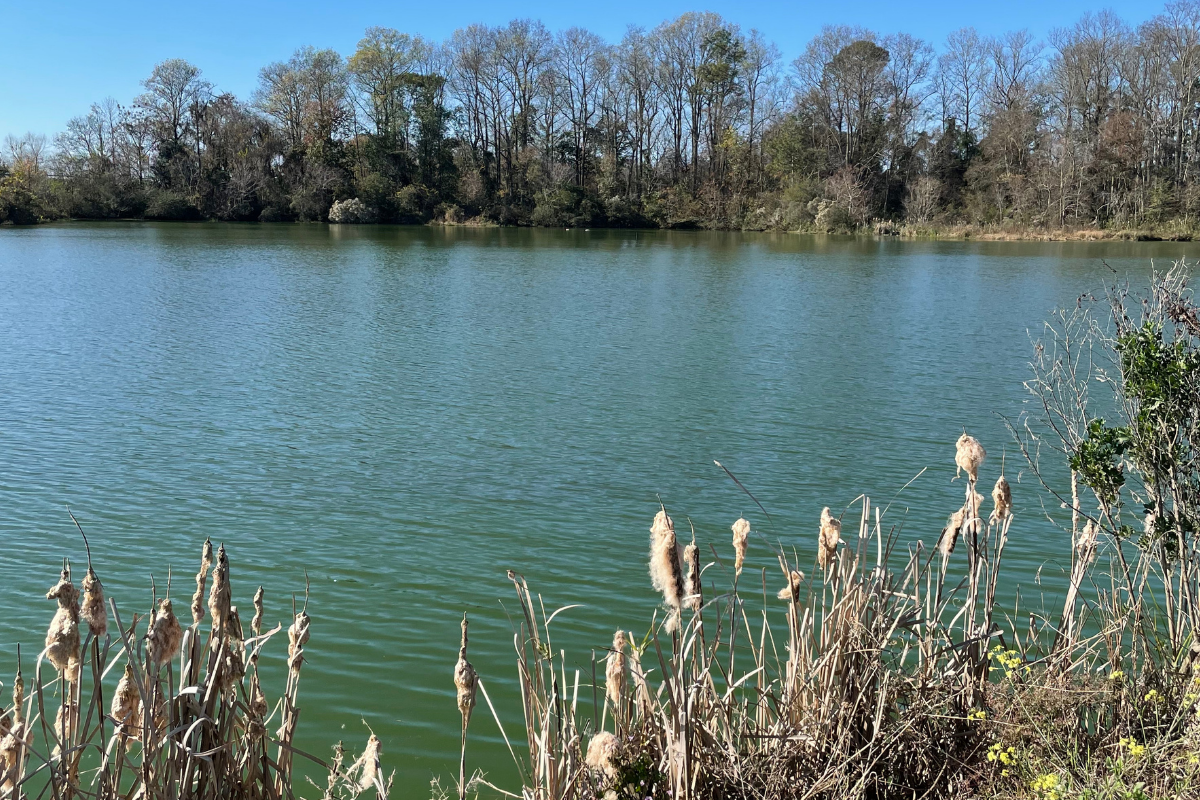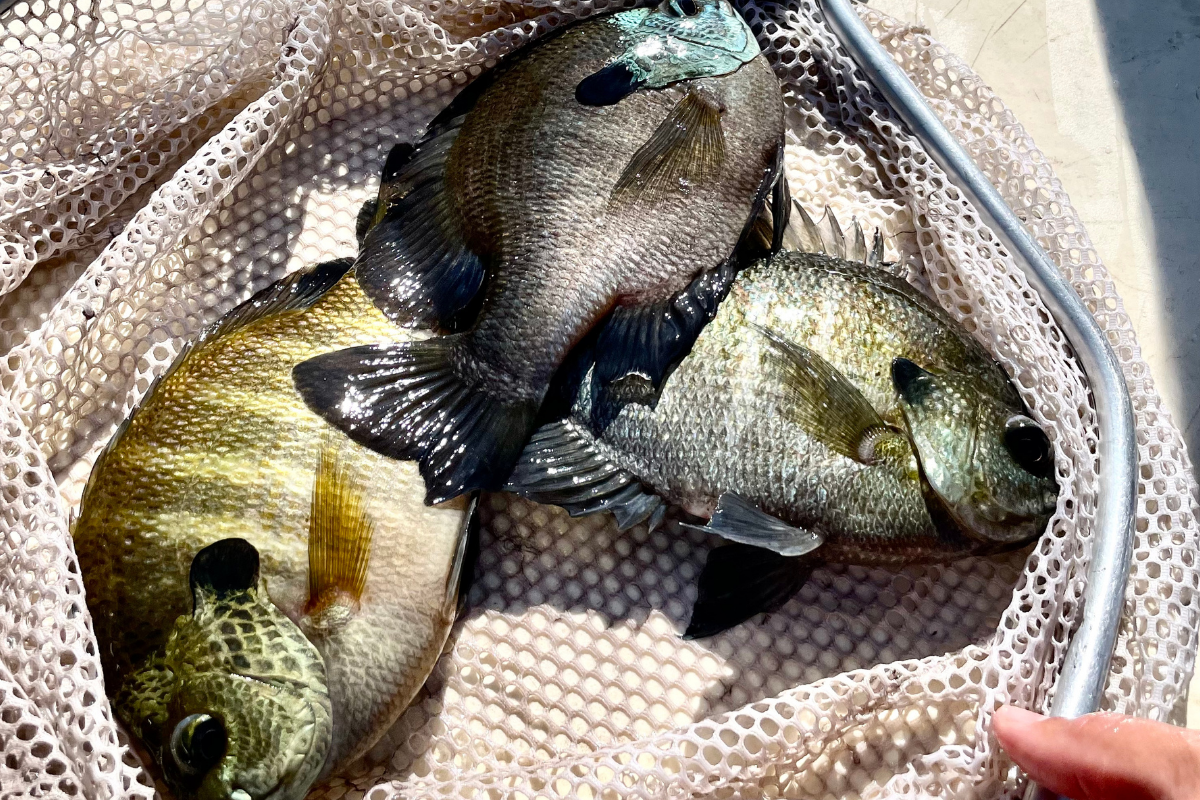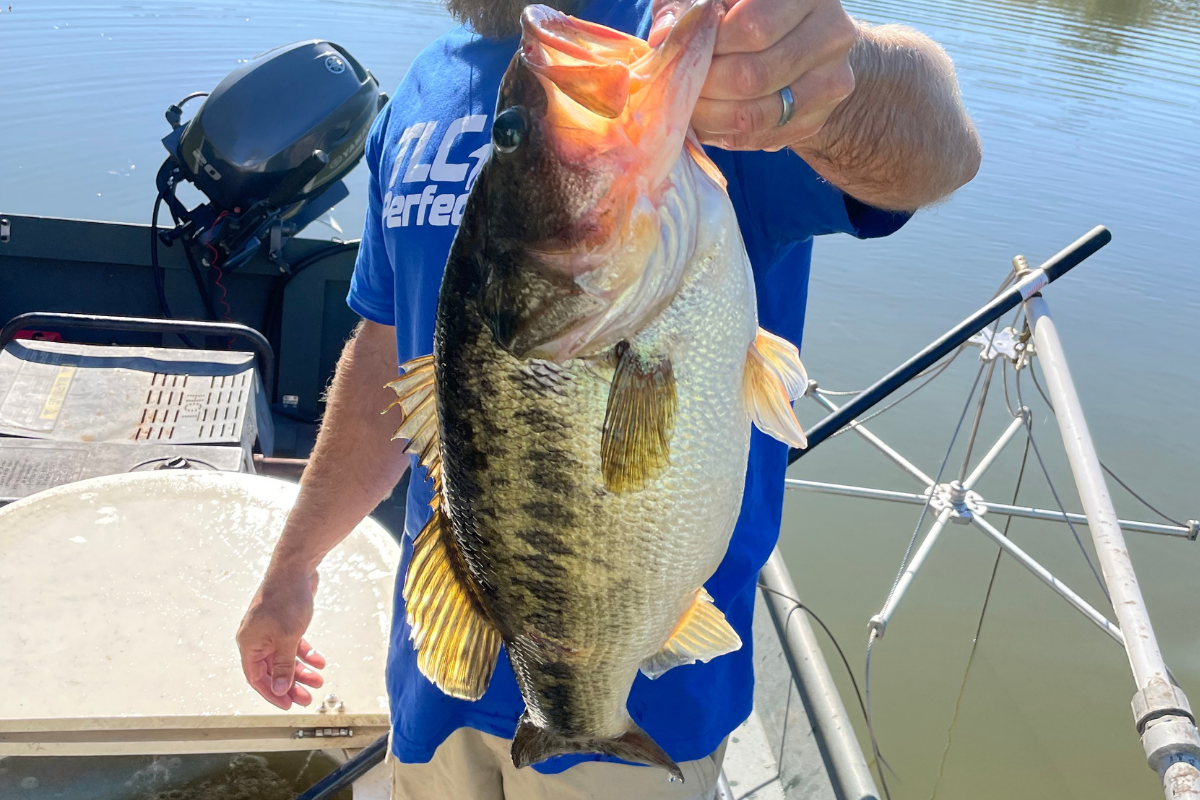Ever wonder why agricultural ponds tend to have a green color on the water surface? This green tint on the pond surface is a sign of high pond fertility that is usually a result of runoff. We see this often in ponds that are located near big tracts of farmland and ponds that are located near livestock.
Agricultural runoff can be a good or bad thing. Having abundant nutrients in the pond water helps to boost the bottom of the pond food chain with benefits cascading up the food chain. But having too many nutrients can cause some serious issues. We’ll talk about the “good” of pond fertility in this article and address the “bad” on a future post.

A Simplified Pond Food Chain
A simplified version of a pond food chain looks something like this:
1) Nutrients in the water are consumed by phytoplankon (photosynthetic plankton).
2) Phytoplankton are eaten by bluegill, shellcracker, and other sunfish.
3) Sunfish are eaten by top predators like largemouth bass.
Obviously, this simplified pond food chain omits some of the fine details. But it’s sufficient to help explain the importance of pond fertility.
Pond Fertility and Phytoplankton
Based on the example above, you can see that phytoplankton form the base of the pond food chain. They consume nutrients in the water and “bloom,” which is what causes the green color you see in most agricultural ponds. If a pond is “nutrient-poor,” phytoplankton will not be abundant.
If we follow that simplified food chain to the top, we can see how the presence of phytoplankton can affect each level of the food chain. If there are no phytoplankton for the bluegill and shellcracker to eat, those sunfish populations won’t reach their maximum size or potential. And if the sunfish are insufficient, the top predators like largemouth bass won’t have much to eat either.

Sampling An 8-acre Agricultural Pond
We recently perfomred an electrofishing survey on an 8-acre agricultural pond that we hadn’t surveyed in a few years. This pond is located near a dairy operation, so it receives a significant amount of nutrient input from manure runoff. As a result, it has that characteristic green tint that we usually see on ponds near livestock or dairy operations.
We sampled this pond a couple years ago and were amazed at the health of the largemouth bass and sunfish populations. The relative weights for all the fish we collected were off the charts. This pond does not have an automatic feeder to feed the bluegill populations, so we knew that the healthy fish populations were a direct result of the healthy phytoplankton populations.
This most recent sampling was done as a checkup to ensure the fish populations were still as healthy as they were during the first electrofishing survey. The owner does allow a decent amount of fishing in this pond. So we wanted to make sure that too many fish weren’t being removed and the population wasn’t suffering as a result.

Some of the Fattest Bass We’ve Ever Seen!
On this most recent electrofishing survey, we found much of the same. All the sunfish we caught were larger than your hand with relative weights above 1.0. This means that these fish were all larger than the standard weight of a fish of the same length.
The largemouth bass also all had relative weights above 1.0 and were some of the fattest largemouth bass we had ever seen. Each one was shaped like a football with a large belly. The largest fish we caught was approximately 8 lbs. But we saw fish during the electrofishing survey that were easily more than 10 lbs.
This pond continues to impress us each time we sample it. From a management perspective, we don’t have to do much to this pond besides making sure it doesn’t get “too green.” The fish removal by the owner and his friends is a good practice to keep populations balanced, and we recommend they continue doing that at a reasonable level.
We Can Help Improve Your Pond Fertility!
If your pond is not located near an agricultural source, you may need to fertilize the pond to boost phytoplankton populations and promote more growth along the entire food chain. We’ll schedule a visit and perform a complete water analysis to determine if your pond is lacking in nutrients to feed the phytoplankton populations.
If you have a pond near an agricultural source and you’re worried about it being “too green,” we can help with that as well. As we’ll address in a future blog, too many nutrients can make pond turnover lethal on the fish populations within it. Either way, complete this CONTACT FORM and we’ll be glad to help.
If you’d like to see the electrofishing survey of this pond with all the monster fish that were caught, you can watch that by clicking the video link below. Be sure to SUBSCRIBE to our YouTube channel and click the bell notification button so that you’re notified each time we publish a new video. Stay tuned for more updates on this complete pond restoration project as we complete them.

